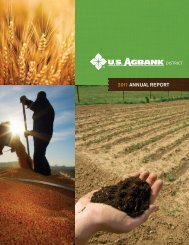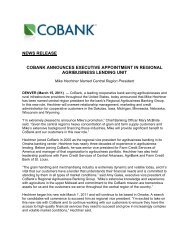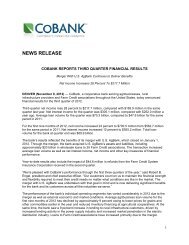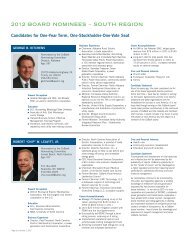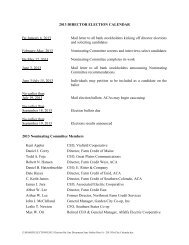A reconciliation of the beginning and ending amount ofunrecognized tax benefits, excluding interest and penalties, isas follows:Year Ended December 31, 2011Balance at Beginning of Year $ 4,102Additions Based on Tax Positions Related to the Current Year 1,102Additions for Tax Positions of Prior Years 430Reductions for Tax Positions of Prior Years (29)Settlements (115)Lapse of Applicable Statute of Limitations (246)Balance at End of Year $ 5,244Year Ended December 31, 2010Balance at Beginning of Year $ 5,761Additions Based on Tax Positions Related to the Current Year 757Additions for Tax Positions of Prior Years 325Reductions for Tax Positions of Prior Years (2,515)Lapse of Applicable Statute of Limitations (226)Balance at End of Year $ 4,102Year Ended December 31, 2009Balance at Beginning of Year $ 4,901Additions Based on Tax Positions Related to the Current Year 727Additions for Tax Positions of Prior Years 493Reductions for Tax Positions of Prior Years (84)Lapse of Applicable Statute of Limitations (276)Balance at End of Year $ 5,761The total amount of unrecognized tax benefits that, ifrecognized, would affect the effective tax rate is $4.8 million.We do not currently believe that the unrecognized tax benefitswill change significantly within the next 12 months.We recognize interest and penalties accrued related tounrecognized tax benefits as a component of the provision forincome taxes. During the year ended December 31, 2011, werecognized an increase of approximately $0.5 million ininterest and penalties. We had approximately $2.2 million and$1.7 million of interest and penalties accrued at December 31,2011 and 2010, respectively.We file income tax returns in federal and various statejurisdictions. With few exceptions, the Bank is no longersubject to federal, state and local, or non-U.S. income taxexaminations by tax authorities for years before 2008.Note 10 – Financial Instruments WithOff-Balance Sheet Risk2011, outstanding commitments to extend credit andcommercial letters of credit were $27.3 billion and$383.3 million, respectively.Since many of these commitments may expire withoutbeing drawn, the total commitments do not necessarilyrepresent future cash requirements. Our exposure to many ofthese commitments is mitigated by borrowing baserequirements contained in loan agreements. However, thesecredit-related financial instruments have off-balance sheetcredit risk because their amounts are not reflected on theconsolidated balance sheets until funded or drawn upon. Thecredit risk associated with issuing commitments andcommercial letters of credit is substantially the same as thatinvolved in extending loans to borrowers. Therefore,management applies the same credit policies to thesecommitments. The amount of collateral obtained, if deemednecessary upon extension of credit, is based on management’scredit evaluation of the borrower. As discussed in Note 2, wemaintain a reserve for unfunded commitments.For a fee, we provide financial standby letters of credit forborrowers, which are irrevocable commitments to guaranteepayment of a specified financial obligation. We also provideperformance standby letters of credit which are irrevocableagreements by us, as a guarantor, to make payments to theguaranteed party in the event a specified third-party fails toperform under a nonfinancial contractual obligation, such as athird-party failing to timely deliver certain commodities at aspecified time and place. We also issue indemnificationagreements that function like guarantees. Theseindemnification agreements contingently require us, as theindemnifying party (guarantor), to make payments to anindemnified party under certain specified circumstances.Certain recourse provisions would enable us, as a guarantor, torecover from third parties any of the amounts paid underguarantees, thereby limiting our maximum potential exposure.As of December 31, 2011, the maximum potential amountof future payments that we may be required to make under ouroutstanding standby letters of credit was $1.3 billion, with afair value of $9.7 million, which is included in other liabilitiesin the consolidated balance sheet. The current status of thepayment/performance risk of the standby letters of creditguarantee is based on internal customer credit ratings that weuse to manage our credit risk. These outstanding standbyletters of credit have expiration dates ranging from January2012 to February 2033.We utilize various financial instruments with off-balancesheet risk to satisfy the financing needs of our borrowers andto manage our exposure to interest rate risk. Such financialinstruments include commitments to extend credit andcommercial letters of credit. Commitments to extend credit areagreements to lend to a borrower provided that certaincontractual conditions are met. Commercial letters of creditare agreements to pay a beneficiary under conditions specifiedin the letter of credit. Commitments and letters of creditgenerally have fixed expiration dates or other terminationclauses and may require payment of a fee. At December 31,<strong>CoBank</strong> 2011 <strong>Annual</strong> <strong>Report</strong>93
Note 11 – Derivative FinancialInstruments and Hedging ActivitiesRisk Management Objectives and StrategiesWe maintain an overall interest rate risk managementstrategy that incorporates the use of derivative financialinstruments to manage liquidity and minimize significantunplanned fluctuations in earnings that are caused by interestrate volatility. Our goal is to manage interest rate sensitivityby modifying the repricing frequency or effective maturity ofcertain balance sheet assets and liabilities. We also maintain aforeign exchange risk management strategy to reduce theimpact of currency fluctuations on our relatively nominalamount of foreign currency-denominated loans. As a result ofinterest rate and foreign exchange rate fluctuations, fixed-rateassets and liabilities will appreciate or depreciate in marketvalue. The effect of this unrealized appreciation ordepreciation is expected to be substantially offset by gains andlosses on the derivative instruments that are linked to theseassets and liabilities. Interest rate and foreign exchangefluctuations also cause interest income and interest expense ofvariable-rate assets and liabilities to increase or decrease. Theeffect of this variability in earnings is expected to besubstantially offset by gains and losses on the derivativeinstruments that are linked to these assets and liabilities.Uses of DerivativesTo achieve risk management objectives and satisfy thefinancing needs of our borrowers, we execute variousderivative transactions with other financial institutions.Derivatives (primarily interest rate swaps) are used to manageliquidity and the interest rate risk arising from maturity andrepricing mismatches between assets and liabilities. Underinterest rate swap arrangements, we agree with a third-party toexchange, at specified intervals, payment streams calculatedon a specified notional amount, with at least one paymentstream based on a specified floating-rate index. We use avariety of interest rate swaps including the exchange offloating-rate for fixed-rate swaps and fixed-rate for floatingrateswaps with payment obligations tied to specific indices. Inaddition, we execute foreign exchange spot and forwardcontracts to manage currency risk on loans denominated inforeign currencies. We also enter into derivatives for ourcustomers as a service to enable them to transfer, modify orreduce their interest rate risk and foreign exchange risk bytransferring such risk to us. We substantially offset this risktransference by concurrently entering into offsettingagreements with counterparties.The notional amounts and related activity of derivatives atDecember 31, 2011, 2010 and 2009 are shown in thefollowing table.Activity in the Notional Amounts of DerivativeFinancial Instruments($ in Millions) Swaps CapsSpots andForwardsTotalDecember 31, 2010 $ 28,699 $ 2,056 $ 199 $ 30,954Additions /Accretion 6,226 - 5,271 11,497Maturities /Amortization (8,937) (38) (5,171) (14,146)Terminations (2,733) (19) - (2,752)December 31, 2011 $ 23,255 $ 1,999 $ 299 $ 25,553December 31, 2009 $ 30,748 $ 1,600 $ 218 $ 32,566Additions /Accretion 4,700 528 2,699 7,927Maturities /Amortization (6,489) (72) (2,718) (9,279)Terminations (260) - - (260)December 31, 2010 $ 28,699 $ 2,056 $ 199 $ 30,954December 31, 2008 $ 26,452 $ 1,911 $ 354 $ 28,717Additions /Accretion 10,129 3 3,432 13,564Maturities /Amortization (5,434) (314) (3,568) (9,316)Terminations (399) - - (399)December 31, 2009 $ 30,748 $ 1,600 $ 218 $ 32,566Accounting for Derivative Instruments and HedgingActivitiesWe record derivatives as assets or liabilities at their fairvalue on the consolidated balance sheets. We record changesin the fair value of a derivative in current period earnings oraccumulated other comprehensive income (loss), dependingon the use of the derivative and whether it qualifies for hedgeaccounting. For fair value hedge transactions that hedgechanges in the fair value of assets or liabilities, changes in thefair value of the derivative will generally be offset in theincome statement by changes in the hedged item’s fair valueattributable to the risk being hedged. For cash flow hedgetransactions, in which we hedge the variability of future cashflows related to a variable-rate asset or liability, changes in thefair value of the derivative are reported in accumulated othercomprehensive income (loss). The gains and losses on thederivatives that we report in accumulated other comprehensiveincome (loss) will be reclassified as earnings in the periods inwhich earnings are affected by the variability of the cash flowsof the hedged item. We record the ineffective portion of allhedges in current period earnings.For our customer transactions, which are not designatedas hedging instruments, we record the related changes in fairvalue in current period earnings. We substantially offset thisrisk transference by concurrently entering into offsettingagreements with counterparties, with the changes in fair valueof these transactions also recorded in current period earnings.<strong>CoBank</strong> 2011 <strong>Annual</strong> <strong>Report</strong>94
- Page 4 and 5:
Everett DobrinskiChairmanRobert B.
- Page 6 and 7:
“ We firmly believe the combined
- Page 8 and 9:
associations are partnering with Co
- Page 11 and 12:
2012 BOARD OF DIRECTORSOccupation:F
- Page 13 and 14:
“WE ARE COMMITTEDTO GOOD GOVERNAN
- Page 15 and 16:
U.S. AgBank CEO Darryl Rhodes (fron
- Page 17 and 18:
KansasNew MexicoUtahFC of Ness City
- Page 19 and 20:
CorporateCitizenshipAT COBANKSuppor
- Page 21 and 22:
StrategicRelationshipsFarm Credit o
- Page 23 and 24:
RegionalAgribusinessBANKING GROUPCe
- Page 25 and 26:
CorporateAgribusinessBANKING GROUPK
- Page 27 and 28:
ElectricDistributionBANKING DIVISIO
- Page 29 and 30:
Power SupplyBANKING DIVISIONTri-Sta
- Page 31 and 32:
IndustryPortfoliosCoBank ended 2011
- Page 33 and 34:
CoBank is a financially strong,depe
- Page 35 and 36:
30COBANK 2011ANNUAL REPORTbuilding
- Page 37 and 38:
The information and disclosures con
- Page 39 and 40:
Financial Condition andResults of O
- Page 41 and 42:
Provision for Loan Losses and Reser
- Page 43 and 44:
Purchased services expense decrease
- Page 45 and 46:
AgribusinessOverviewThe Agribusines
- Page 47 and 48: Rural InfrastructureOverviewThe Rur
- Page 49 and 50: Credit ApprovalThe most critical el
- Page 51 and 52: Total nonaccrual loans were $134.9
- Page 53 and 54: Basis RiskBasis risk arises due to
- Page 55 and 56: Our net interest income is lower in
- Page 57 and 58: The notional amount of our derivati
- Page 59 and 60: Reputation Risk ManagementReputatio
- Page 61 and 62: Investment Securities ($ in Million
- Page 63 and 64: In accordance with the Farm Credit
- Page 65 and 66: Critical Accounting EstimatesManage
- Page 67 and 68: Business OutlookWe closed our merge
- Page 69 and 70: Consolidated Income StatementsCoBan
- Page 71 and 72: Consolidated Statements of Cash Flo
- Page 73 and 74: Consolidated Statements of Changes
- Page 75 and 76: LoansWe report loans, excluding lea
- Page 77 and 78: If we determine that a derivative n
- Page 79 and 80: Reserve for Credit ExposureThe foll
- Page 81 and 82: The information in the tables under
- Page 83 and 84: The following tables present inform
- Page 85 and 86: At December 31, 2011, gross minimum
- Page 87 and 88: For impaired investment securities,
- Page 89 and 90: At December 31, 2011, the assets of
- Page 91 and 92: Preferred StockThe following table
- Page 93 and 94: The following table provides a summ
- Page 95 and 96: AssumptionsWe measure plan obligati
- Page 97: Incentive Compensation PlansWe have
- Page 101 and 102: A summary of the impact of derivati
- Page 103 and 104: Due to the uncertainty of expected
- Page 105 and 106: Assets and Liabilities Measured atF
- Page 107 and 108: Note 14 - Segment Financial Informa
- Page 109 and 110: Note 15 - Commitments and Contingen
- Page 111 and 112: Note 18 - Subsequent Events (Unaudi
- Page 113 and 114: Supplemental District Financial Inf
- Page 115 and 116: Supplemental District Financial Inf
- Page 117 and 118: Report of Independent AuditorsCoBan
- Page 119 and 120: Management’s Report on Internal C
- Page 121 and 122: Annual Report to Shareholders Discl
- Page 123 and 124: Board of Directors Disclosure as of
- Page 125 and 126: Board of Directors Disclosure as of
- Page 127 and 128: Board of Directors Disclosure as of
- Page 129 and 130: Board of Directors Disclosure as of
- Page 131 and 132: Senior OfficersCoBank, ACBRobert B.
- Page 133 and 134: Senior Officers Compensation Discus
- Page 135 and 136: Senior Officers Compensation Discus
- Page 137 and 138: Senior Officers Compensation Discus
- Page 139 and 140: Senior Officers Compensation Discus
- Page 141 and 142: Senior Officers Compensation Discus
- Page 143 and 144: Senior Officers Compensation Discus
- Page 145 and 146: Code of EthicsCoBank, ACBCoBank set
- Page 147 and 148: CERTIFICATIONI, Robert B. Engel, Pr
- Page 149 and 150:
LeadershipCoBank, ACBRobert B. Enge
- Page 151 and 152:
OfficeLocationsCoBank National Offi






